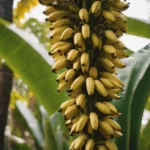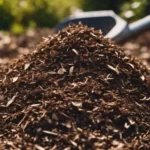Trees, the silent giants of our ecosystems, play a pivotal role in maintaining the balance of nature. Beyond their aesthetic appeal, trees serve as essential contributors to oxygen production, carbon sequestration, and overall biodiversity. However, the intricate web of nature involves not just the growth and sustenance of trees but also their consumption by various organisms. In this exploration, we’ll delve into the diverse array of creatures that partake in the consumption of trees, influencing the health and dynamics of these majestic plants.
Herbivores
Trees, despite their towering stature, are not immune to the appetites of herbivores. Insects form a significant category of tree consumers, with some species feeding on leaves, bark, or even wood. These insect herbivores can impact the overall health of trees, leading to defoliation or structural damage. Additionally, mammals such as deer and rabbits play a role in tree consumption through browsing and grazing activities. Understanding the dynamics of herbivores and their impact on trees is essential for comprehending the broader ecological picture and the challenges that trees face in their natural environments.
Birds
Beyond the terrestrial realm, trees also interact with avian inhabitants. Birds contribute to the consumption of trees in various ways. Some birds feast on tree seeds, fruits, or sap, playing a role in seed dispersal and pollination. Additionally, trees provide essential nesting sites and habitats for numerous bird species. The relationship between birds and trees underscores the interconnectedness of these two vital components of ecosystems, showcasing the mutual benefits derived from their interactions.
Fungi and Microorganisms
While visible fauna interact with trees, an equally crucial role is played by fungi and microorganisms beneath the surface. Decomposition of trees is facilitated by fungi and bacteria, breaking down organic matter into nutrients that contribute to the health of the ecosystem. The intricate dance between trees and microorganisms in nutrient cycling highlights the hidden but essential processes occurring in the soil. Understanding the role of fungi and microorganisms provides insight into the resilience and sustainability of tree ecosystems in the face of environmental changes.
Human Impact
As custodians of the environment, human activities significantly impact trees. Logging and deforestation, driven by industrial and agricultural needs, pose substantial threats to tree populations worldwide. The relentless pursuit of resources often results in the depletion of forests, disrupting not only the habitats of countless organisms but also the ecological balance of entire ecosystems. Recognizing the consequences of human-induced tree consumption is crucial for fostering sustainable practices and implementing conservation efforts to mitigate the adverse effects on our valuable tree cover.
Conclusion
In conclusion, the consumption of trees is a complex interplay involving herbivores, birds, fungi, microorganisms, and, significantly, human activities. Trees, as pillars of ecological health, face challenges from various fronts. Understanding the multifaceted relationships between trees and their consumers is essential for fostering conservation awareness and sustainable practices. As we navigate the intricate web of ecological dynamics, recognizing the importance of preserving our trees becomes paramount, ensuring a harmonious coexistence between nature and humanity for generations to come.




